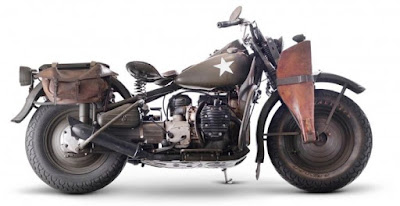If you're looking at this car, maybe you should forget the Ferrari FXX K for a minute, because what you have seen here is far more insane than that. It's true, the garage-built dragster called "Insanity" built in such ways to look like a Ferrari Enzo, and all you have to do is look back to see why the car got such a crazy name.
 |
| This is Insanity, a jet-powered Ferrari Enzo dragster built by Ryan McQueen. (Picture from: https://bit.ly/2IkE8iP) |
The unique-look dragster was built by a Canadian named Ryan McQueen, who by no means was a technical person when he started out. In fact, at the beginning of his unique Ferrari Enzo dragster project, he din’t even know how to do a simple welding.
But perseverance is the best effort to gain knowledge and with time Ryan
learned how to work with fibre glass, build a steel tube frame and even
understand how to work around jet engines. It took him about 12 years
to be exact, and the end result here is absolutely mind-blowing.
 |
| The Insanity jet-powered dragster bodywork built by Ryan McQueen is inspired by the Ferrari Enzo legendary supercar which has been adjusted to the twin jet engines as its main drive. (Picture from: https://bit.ly/2IkE8iP) |
The car appearence looked as powerful as a jet fighter which he felt would not be enough with just one jet engine. Therefore, Ryan bought two Roll-Royce jet engines after selling his Corvette first. Infact, the Insanity has made Ryan spending out his money about CAD $69,000 (approx Rp.771 milions) to build completely, for which he secured initial funding by selling off his Corvette.
He also created the Ferrari Enzo inspired bodywork from his own idea which he said looked very convincing. Although, by looking at the dragster's end result in the terms of dimensions and shape it doesn't really resemble the real Enzo, but it does get the proportions pretty much right.
 |
| The Insanity jet-powered Ferrari Enzo dragster push out an insane 14,000 pounds of thrust and can be make it running out of 400 mph (or approx 643 kph) on the flat track. (Picture from: https://bit.ly/2IkE8iP) |
The twin-jet engines in this Ferrari Enzo dragster push out an insane 14,000 pounds of thrust and can be make it running out of 400 mph (or approx 643 kph) on the flat track.
Even though it's crazy, therefore Insanity is a big achievement. McQueen started from a dream and made him excited to make it happen. And now, what he has built is become one of the world's fastest jet cars. *** [EKA | FROM VARIOUS SOURCES | NOCARFUN | THE DRIVE | ROAD AND TRACK]
Note: This blog can be accessed via your smart phone



































